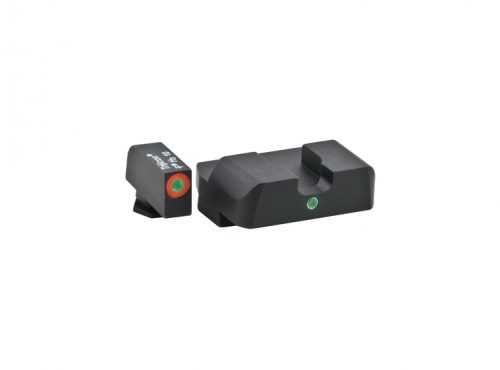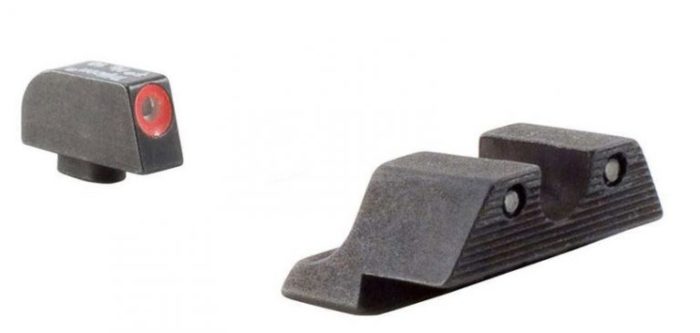There are many things you learn when carrying handguns on a regular basis. Some call it “tricks of the trade” that are passed down from older generations to newer. Other things are learned over time through training and experience. As a professional firearms instructor I have had the privilege of learning from some amazing instructors as well as individuals who carry firearms professionally every day.
The first thing to look at when choosing a defensive handgun sight is what you are going to be doing with that particular firearm. Handguns used for target shooting are going to be set up completely different than handguns that are set up for personal protection because they need to achieve different results.
Target Guns vs. Protection Guns
Target guns are specifically designed to shoot the tightest group possible at different distances with good lighting and no pressure. Generally these firearms have been fitted to tighter tolerances to mitigate inaccuracy which ultimately makes them finicky or more prone to potential feed jams. Handguns used for personal protection are designed with looser tolerances to minimize weapons malfunctions. And, the sights are typically set up with wider notches and a bigger front sight so you can line up your sights faster.
The idea behind this is that with personal defense handguns you do not necessarily want to shoot 1-inch groups but rather “fist-sized” groups as fast as you can. When you are selecting sights for defensive use you generally want to choose a low-profile sight that would minimize snagging on clothing when you are drawing your firearm from a concealed position.
When selecting a good sight for personal protection I generally look for sights that do not have a ledge angled to the front such as the Novak Cut rear sights, but rather sights that have some sort of a squared-off edge to the front like the Ameriglo I-Dot Pro or the Trijicon HD’s. The reason is that I like having a ledge that I can cycle my slide on if I need to clear a malfunction with just using one hand.
If you are in a self-defense situation and you get an injury to your shooting hand, you’ll need to clear any malfunction with just one hand. Adding grip tape in the space between the front of my rear sight and the rear of my chamber adds some texture so that the gun has something to “grip” onto if I need to clear the slide by using clothing or the back of my boot or a table or any other fixed object. Grip tape or skateboard tape can be acquired for less than a dollar at most home improvement stores and adds a world of difference in single hand operations of defensive handguns.
Night Sights
Night sights are always an added bonus. However, you are still going to want a sight that is easily acquired during the day as well as night. Fiber optic sights work well during the day however they leave a lot to be desired during the night. Sights like XS big dots, or Trijicon HD’s have almost a duel role and give the user of the firearm the ability to see the sights just as well in both circumstances.
Regardless of whatever sight system you decide to use it is highly recommended that you practice with it a lot. Not all sights will have the same point of aim or point of impact and it is vital to understand how your sights will responded when shooting from different distances. Also realize that different ammunition can have a slightly different point of aim vs point of impact. Having said that, there is no shortcut to effective training and any upgrade on your firearm is no substitute for effective marksmanship.
Sight images courtesy of opticsplanet.com. Gun image courtesy of Donovan Beard.
Thanks to American Concealed for the previously published article.


